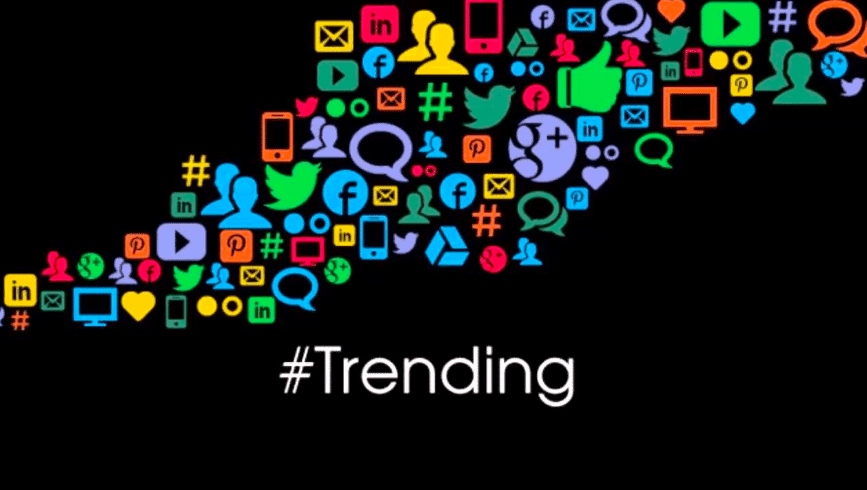When Kim Kardashian was spotted on the cover of Paper Magazine, the media was in an absolute frenzy.
“Kim K breaks the internet!”
“#BreaktheInternet on Twitter!”
“Kim Kardashian did WHAT?”
Fans and haters alike were ALL OVER this story- sharing opinion pieces, memes, gifs, and all kinds of juicy content around this scandalous magazine cover.
While Kimmy is known for her attention-grabbing selfies and otherwise newsworthy antics, this story, in particular, will likely go down in history as one of her most “trending” pop culture busts of all time.
‘What Does Kim K Have to Do with My Content Strategy?’

Though Kim Kardashian may not be the content queen anyone asked for (or even needs), it’s undeniable that there is some brilliant strategy to pick apart here. After all, most content publishers would LOVE for their content to go viral and drive the kind of exposure that Kim K gets on a daily basis.
The good news is – you too can create content that “breaks the internet”. And don’t worry – it doesn’t have to involve your derriere.
How to Write Content That Goes Viral

While not every piece of content you put out will or even should “break the internet”, there are some things to consider if you are chasing that viral visibility.
Ultimately, for your content to go viral AND be beneficial to your business or blog, it needs to be hyper-targeted, share-worthy, and serve a purpose.
Do you think Kim K’s mag cover was just a simple stunt to put her picture out into the world? No. It appealed to a wide audience on a very visceral level AND drove the attention (read: $$$) that she was after. Articles about her Paper cover still drive traffic to this day. Meanwhile, she is raking in the moolah.
So what can YOU do to cash in on this strategy? Keep readin’, my friend!
1) It Has to Be Timely

Kim Kardashian’s Paper Magazine cover came at a time where race relations was a hot topic. With the emergence of the Black Lives Matter movement, the presidential election, and stories about racial violence, her image tore a lot of that wide open. Specifically, her image was a spinoff of the original Sarah “Saartjie” Baartman photos that depicted race as a caricature, while highlighting the exoticism of female sexuality.
Though her depiction was highly controversial, it came at a time when people were thirsty for content about race, politics, and feminism. Kim K’s cover rolled all of these topics into one and gave the public exactly the kind of content that she (or her marketing team) knew would be circulated across social media at an accelerated pace.
To create content with this kind of mass appeal, you have to be in tune with the current times. What is the public hungry for? What is being talked about? What is the social or political climate like at that moment? What is getting peoples blood pumping and causing them to rant-tweet all over Twitter?
Capture that, and you can be sure that your audience will be eager to gobble that content right up.
2) It Has to Be Trending

Much related to the point above, viral content usually fits in with the current trends of what content is already being circulated at that moment.
Not only are people searching for that type of content, but they are engaging with it, sharing it, and even creating it themselves.
The best way to know what content is trending (and look for opportunities to add your own content to the mix) is to follow the most up-to-date content platforms.
Twitter hashtags, Google Trends, and the Facebook “Trending” feature are all places to look to when it comes to seeing what content is trending. Even better, you should jump on a topic as soon as a story breaks to try and get ahead of the curve. In other words, see what’s hot and hop on it before everyone else does.
3) It Has to Induce Emotions

Kim Kardashian’s cover induced a lot of different emotions. Some of those emotions included disgust, awe, lust, discomfort, and even humor. What’s undeniable is that no matter whether people loved her or hated her, most had some kind of opinion about her posterior on the cover of a popular magazine.
While some content is meant to inform, sell, or offer an opinion – the point of “viral” content is to inspire emotion. If people don’t care, they won’t click on it, they won’t engage with it, and they certainly won’t share it on a mass scale.
The problem is, a lot of content publishers are scared of this. Putting this kind of content out there opens the doors to differing opinions and even criticism. But like the saying goes, “There’s no such thing a bad publicity”… and in this case, getting that kind of attention can actually help your content “break the internet”.
>>> The * to this is that you should be discerning and strategic about what you put out there. Many businesses have gotten a bad rap by putting problematic rants and raves into the world. Be prepared to handle the feedback (or even backlash).
4) It Has to Be Click-Worthy

Your audience’s first impression of your content can really make or break its success. That’s why the title, description, and visuals that you use for your content are so important.
Peoples first point of contact with your content will likely be on social media once you have shared the content, so it’s important to optimize your content for clickthroughs. In order to do this, your title has to be attention-grabbing and preferably be accompanied by an engaging image or video.
Before you hit “publish” and circulate your content online, it would be smart to get feedback from your network, fans, or even friends and family about what your title, description, and image should be. What is more likely to get them to click on it? Would a picture be better, or should you use a video? Even doing a bit of research can make all the difference.
Don’t be afraid of “clickbait”. It’s called that for a reason. Obviously, you don’t want to mislead your readers, but there is something to be said for using a thought-provoking title and striking graphic.
5) It Has to Be Relevant

This point goes beyond just social relevance and really gets into your target audiences heads.
It’s one thing for your content to go viral and drive traffic to your site, but for it to actually generate the exposure that you want, it has to be relevant to the needs of your audience.
Kim Kardashian fans are always thirsty for pictures of her striking figure. And she gave them exactly what they were after. It was on-brand, got eyes on her “assets”, and ultimately made her money.
Before you run to your keyboard to start typing up your latest piece of content, be sure it is relevant to what your business is about and what your audience is searching for. It has to be cohesive with your brand identity, styling, and goals.
6) It Has to Be Circulated

Have a plan of action for how you will circulate your content. It is not enough to share it to Facebook and hope for the best.
Creating a viral piece of content takes energy and strategy, and sometimes even a financial investment. If you are serious about having your content “break the internet”, it would be smart to think about how you will share it across platforms, to the right audience, and at an accelerated rate.
Buffer, Hootesuite, Tailwind, and the like are all automated tools that you can use to schedule your content. You may also consider running paid ads, or hire a virtual assistant to share your content in Facebook groups and on other platforms. The purpose should be to get your content in front of as many eyes as possible right from the get-go.
7) It Has to Be Shareable

Have you ever come across a piece of content that just HAS to be shared, just to realize you can’t find the “Share” button? Don’t let this happen to your content!
You should make it super easy for users to share your content across nearly every platform imaginable.
This means including functional share buttons on your post, making sure your graphics are on point, and even writing unique descriptions for each platform.
You should also consider creating your own hashtag or campaign to accelerate the sharing process.
Your worst nightmare would be to invest in an amazing piece of content just to have people confused about how to share it.
If you have questions about this, be sure to consult with a content expert or web developer to ensure that your content is ready to go!
8) It Has to Have a Purpose

What’s the point of creating “viral” content anyway? To drive engagement and hopefully $$$ for your website or business!
Getting a ton of traffic to your website is great and all, but ultimately it’s what you DO with that traffic that matters.
After people read or watch your content, what action do you want them to take? Do you want them to subscribe? Follow you on Instagram? Give you a call? The purpose of your content is a critical part of this entire process.
Unfortunately, I don’t have Kimmy on speed-dial to ask her what her primary purpose was for her mag cover, but my *hunch* says that it was to make that money, baby! And no doubt, she got more followers, deals, and money as a result of that cover.
If you can tie your content in seamlessly with your business goals, you are golden. Just be sure that you do in fact HAVE a purpose, and that your content is set up to drive those kinds of conversions.
Break the Internet, Kim K Style
Want your content to go viral and drive crazy visibility for your website? Employ the strategy above and you are well on your way to breaking the internet – the Kim K way.
Let’s take your content strategy to the next level! Learn everything you need to know about creating a monthly content plan in my latest ebook!
DOWNLOAD THE FREE SEO CONTENT ROADMAP!
Of course, shoot me a message if you have questions along the way at jessica@keysandcopy[dot]com
